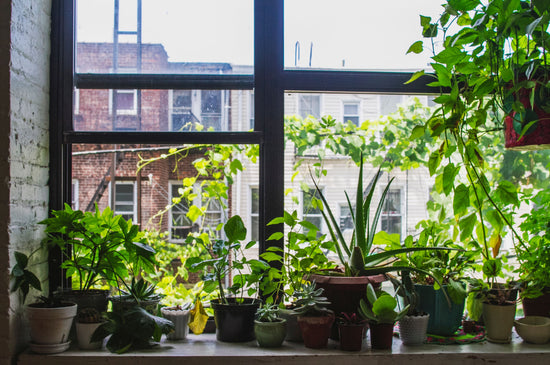How to Identify and Prevent Leaf Tip Burn on Houseplants
Leaf tip burn is a common issue that can affect many types of indoor plants, causing unsightly brown edges on otherwise healthy foliage. If you’re a plant enthusiast, noticing crispy leaf tips on your beloved houseplants can be frustrating. However, understanding the causes and learning how to prevent this problem can keep your indoor plants thriving and looking their best.
What Is Leaf Tip Burn?
Leaf tip burn occurs when the edges or tips of a plant’s leaves turn brown, dry, and brittle. While it’s typically a cosmetic issue, it can signal underlying problems in your plant care routine. Left unaddressed, it may lead to more significant health issues for your houseplants.
Common Causes of Leaf Tip Burn on Indoor Plants
-
Underwatering
- Dry soil can deprive your houseplants of the moisture needed to keep their leaves healthy. Without enough water, leaf tips are the first to dry out and turn brown.
- Signs: Curling leaves, droopy stems, and crispy tips are common indicators.
-
Overwatering
- Too much water can lead to root rot, preventing your indoor plants from absorbing nutrients properly. This stress often results in brown leaf tips.
- Signs: Mushy stems, yellowing leaves, and soggy soil.
-
Low Humidity
- Many houseplants, especially tropical plants like ferns and calatheas, require high humidity to thrive. Dry indoor air, especially during winter, can cause leaf tips to dry out.
- Signs: Browning starts at the tips and edges of leaves.
-
Excess Fertilizer
- Over-fertilizing can lead to a buildup of salts in the soil, which can burn the roots and result in brown or scorched leaf tips.
- Signs: White crust on the soil surface and discolored tips.
-
Fluoride and Chlorine in Tap Water
- Sensitive houseplants, such as spider plants and peace lilies, can develop leaf tip burn due to fluoride or chlorine in tap water.
- Signs: Browning tips despite proper watering and humidity.
-
Lighting Issues
- Intense, direct sunlight can scorch delicate leaves, while insufficient light can weaken plants, making them susceptible to browning.
- Signs: Scorched patches or dull, drooping leaves.
How to Treat and Prevent Leaf Tip Burn on Houseplants
-
Check Your Watering Routine
- Solution for Underwatering: Water your plants consistently, ensuring the soil is evenly moist but not soggy. Use a moisture meter to monitor soil levels.
- Solution for Overwatering: Allow the top 1–2 inches of soil to dry out between waterings, and ensure pots have drainage holes to prevent waterlogging.
-
Increase Humidity
- Use a humidifier near your indoor plants to maintain a comfortable humidity level.
- Group plants together to create a microclimate or place them on pebble trays filled with water.
- Mist plants with room-temperature water if they tolerate it (avoid misting plants like African violets).
-
Use Filtered or Distilled Water
- Avoid tap water with high fluoride or chlorine levels by using filtered, distilled, or rainwater for sensitive plants. Let tap water sit overnight to allow chemicals to dissipate.
-
Adjust Fertilizer Application
- Use a balanced, diluted houseplant fertilizer during the growing season, typically every 4–6 weeks. Avoid over-fertilizing by following label instructions carefully.
-
Provide Proper Lighting
- Place houseplants in bright, indirect light. For plants that prefer low light, such as pothos or ZZ plants, avoid placing them in direct sunlight.
-
Trim Damaged Leaves
- Use clean, sharp scissors to trim off brown tips or dead leaves, cutting just above a healthy leaf vein or node. This improves the plant's appearance and allows it to focus energy on new growth.
Houseplants Prone to Leaf Tip Burn
- Spider Plants: Sensitive to fluoride in water; require distilled water.
- Peace Lilies: Susceptible to both overwatering and underwatering.
- Calatheas: Require high humidity and proper watering.
- Ferns: Thrive in humid environments and suffer in dry indoor air.
- Dracaenas: Sensitive to salts and chemicals in tap water.
FAQs About Leaf Tip Burn on Indoor Plants
Q: Can I save a plant with extensive leaf tip burn?
A: Yes! Start by identifying and addressing the underlying issue, such as watering, humidity, or fertilizer. Trim away damaged areas to improve its appearance and focus on providing optimal care.
Q: Will increasing humidity fix leaf tip burn?
A: It can help prevent further damage for humidity-loving plants. However, addressing other factors like watering and fertilizer is equally important.
Q: Should I cut off all brown leaf tips?
A: Yes, you can safely trim brown leaf tips with clean scissors. Cut slightly above the damaged area to avoid harming healthy tissue.
Q: Can I use tap water for my houseplants?
A: Tap water is fine for most plants, but sensitive species may benefit from filtered or distilled water to avoid issues like fluoride burn.
Q: Why do only the leaf tips turn brown?
A: The tips are the furthest point from the roots, making them more susceptible to stress caused by watering, fertilizer, or humidity problems.
By understanding the causes of leaf tip burn and taking proactive steps, you can keep your indoor plants lush, vibrant, and healthy. For more tips on maintaining your houseplants, check out our expert advice and shop live indoor plants today!





